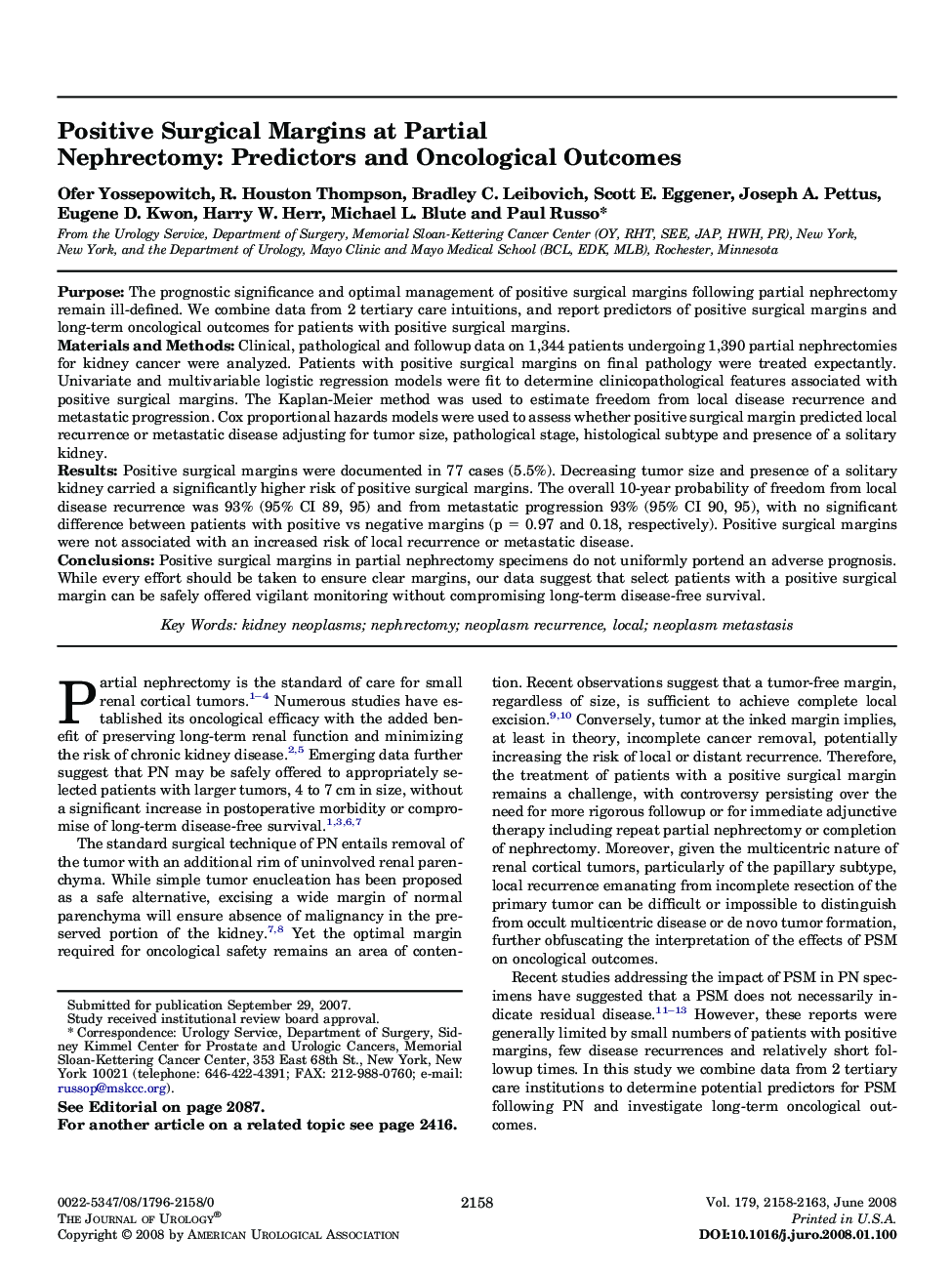| Article ID | Journal | Published Year | Pages | File Type |
|---|---|---|---|---|
| 3871943 | The Journal of Urology | 2008 | 6 Pages |
PurposeThe prognostic significance and optimal management of positive surgical margins following partial nephrectomy remain ill-defined. We combine data from 2 tertiary care intuitions, and report predictors of positive surgical margins and long-term oncological outcomes for patients with positive surgical margins.Materials and MethodsClinical, pathological and followup data on 1,344 patients undergoing 1,390 partial nephrectomies for kidney cancer were analyzed. Patients with positive surgical margins on final pathology were treated expectantly. Univariate and multivariable logistic regression models were fit to determine clinicopathological features associated with positive surgical margins. The Kaplan-Meier method was used to estimate freedom from local disease recurrence and metastatic progression. Cox proportional hazards models were used to assess whether positive surgical margin predicted local recurrence or metastatic disease adjusting for tumor size, pathological stage, histological subtype and presence of a solitary kidney.ResultsPositive surgical margins were documented in 77 cases (5.5%). Decreasing tumor size and presence of a solitary kidney carried a significantly higher risk of positive surgical margins. The overall 10-year probability of freedom from local disease recurrence was 93% (95% CI 89, 95) and from metastatic progression 93% (95% CI 90, 95), with no significant difference between patients with positive vs negative margins (p = 0.97 and 0.18, respectively). Positive surgical margins were not associated with an increased risk of local recurrence or metastatic disease.ConclusionsPositive surgical margins in partial nephrectomy specimens do not uniformly portend an adverse prognosis. While every effort should be taken to ensure clear margins, our data suggest that select patients with a positive surgical margin can be safely offered vigilant monitoring without compromising long-term disease-free survival.
